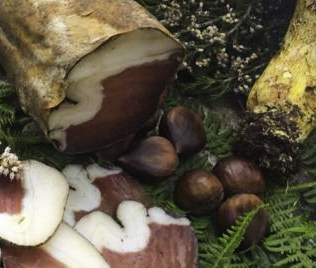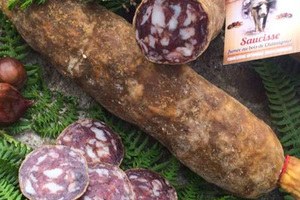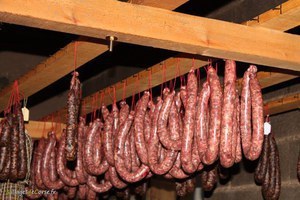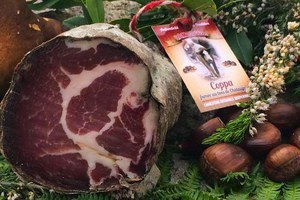Lonzu - Corsican cold meats
Pork loin

Corsican lonzo is made from pork loin, from the rack of ribs to the tenderloin with the fat covering. After slaughtering and cutting, each lonzu is first salted. Slaughtered pigs are less than 3 years old, and one pig produces 4 lonzi. Maturation must last a minimum of 3 months, and lasts an average of 5 months, when the lonzi are tied up to keep them fresh.
How to recognize a well-balanced lonzu
Fat plays a vital role in cured meats, and the ratio of fat to lean in lonzu should be roughly one-third fat to two-thirds lean. Removing the fat from a well-proportioned lonzu is a bit of a sacrilege, since it prevents the product from becoming too dry, and adds a particular taste to this much-appreciated delicatessen.
The difference between lonzu and coppa
First of all, lonzu is a delicatessen found only in Corsica, whereas coppa is a delicatessen found in both Italy and Switzerland.
These two cured meats are difficult to distinguish without slicing, as lonzu is generally longer and thinner than coppa. To identify them easily, cured meats producers generally use different colored threads.
Once sliced, there's no doubt about it: lonzu has a covering fat on the top (or bottom, depending on the cutting direction), while coppa's fat resembles that of muscle meats in general, i.e. striated.


